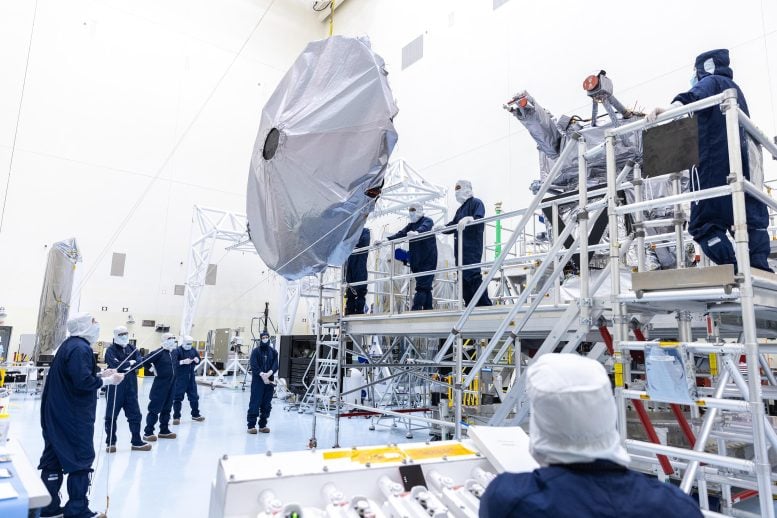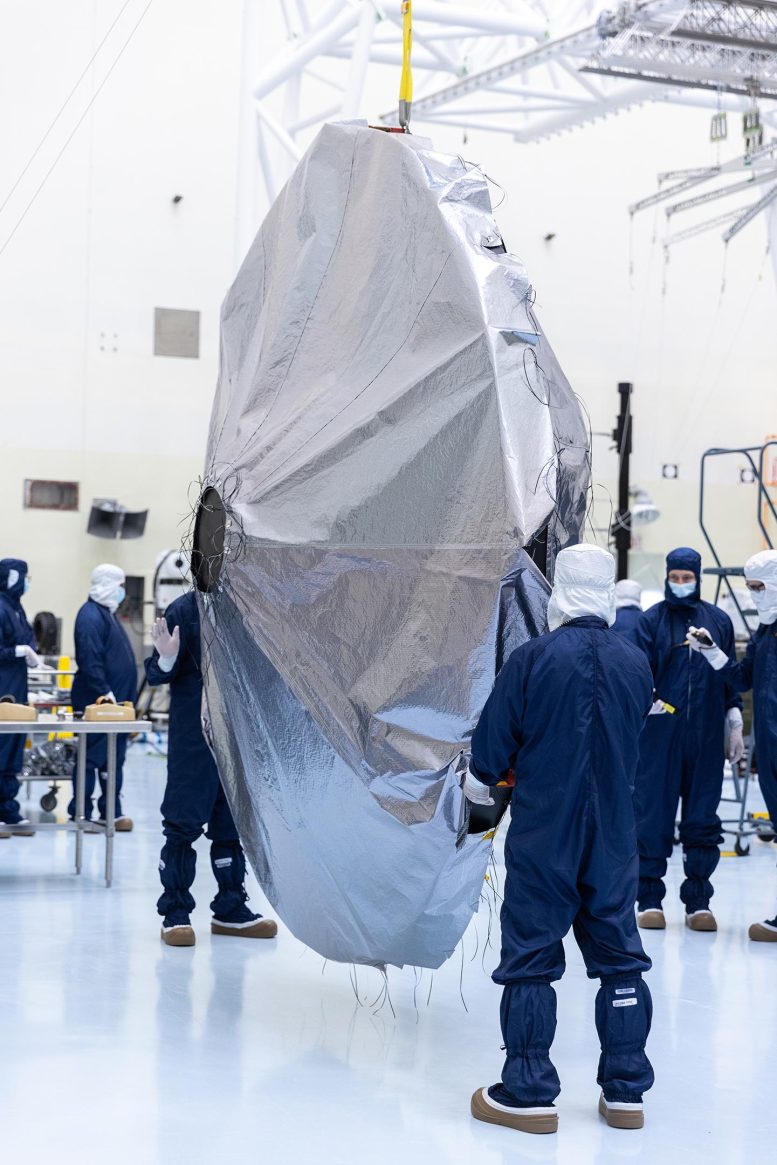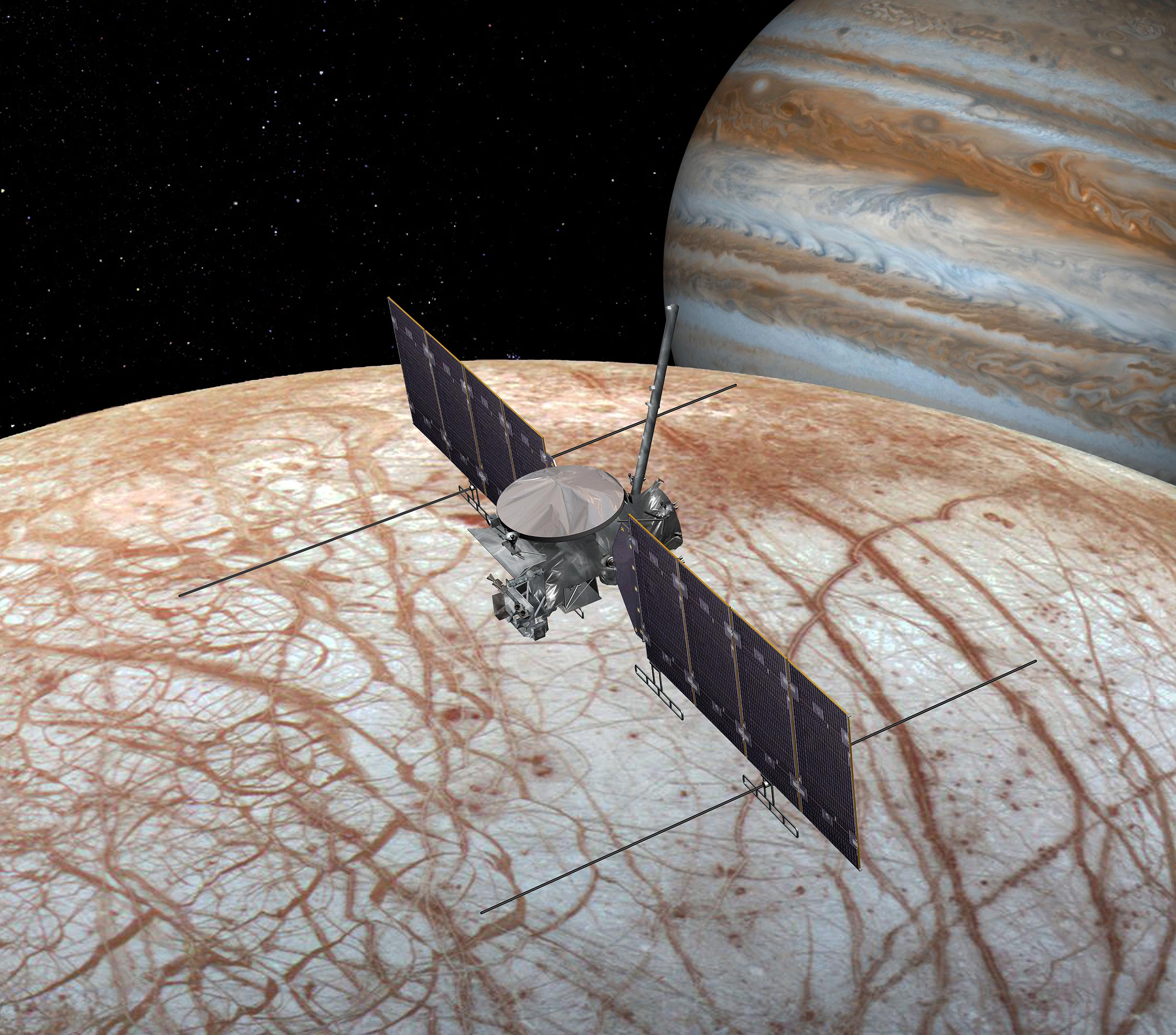NASA’s upcoming Europa Clipper mission will explore Jupiter’s moon Europa for signs of habitability. Launching in 2024, the mission will use advanced communication tools to study the moon’s environment and its capacity to support life. Credit: NASA/JPL-Caltech

Technicians prepare to install the nearly 10 feet (3 meters) wide dish-shaped high-gain antenna to NASA’s Europa Clipper, a spacecraft to study Jupiter’s icy moon, at the agency’s Payload Hazardous Servicing Facility at Kennedy Space Center in Florida on Monday, June 17, 2024. Credit: NASA/Kim Shiflett
Advanced Communication Technology
The spacecraft will conduct approximately 50 flybys of Europa, allowing its nine science instruments to gather data on the moon’s atmosphere, its ice crust, and the ocean underneath. The nearly 10-foot-wide (3-meter) dish-shaped antenna and several smaller antennas will transmit the data to Earth, a trip that will take about 45 minutes when the spacecraft is in orbit around Jupiter.
To ensure Europa Clipper has the necessary bandwidth, the antenna will operate on NASA’s deep space X-band radio frequencies of 7.2 and 8.4 (GHz), and Ka-band at 32 (GHz), through the agency’s Deep Space Network, a global array of large radio antennas that communicate with dozens of spacecraft throughout the solar system.

NASA’s Europa Clipper spacecraft will perform a series of flybys of the Jupiter moon Europa to gather data on its atmosphere, icy crust, and the ocean underneath, and the high-gain antenna will send the research data to scientists on Earth to determine if the moon can support habitable condition. The Europa Clipper spacecraft is scheduled to launch atop a SpaceX Falcon Heavy rocket from Kennedy’s Launch Complex 39A no earlier than October 2024. Credit: NASA/Kim Shiflett
Exploring Habitability in Our Solar System
Europa Clipper underscores NASA’s commitment to exploring our solar system for habitable conditseions beyond Earth. Although Europa Clipper is not a life-detection mission, understanding Europa’s habitability will help us better understand how life developed on Earth and whether we’re likely to find conditions that might support life beyond our planet.
Technicians at NASA Kennedy will continue to prepare the spacecraft for its mission and perform final checkouts as part of launch preparations. Europa Clipper is scheduled to launch atop a




















Discussion about this post